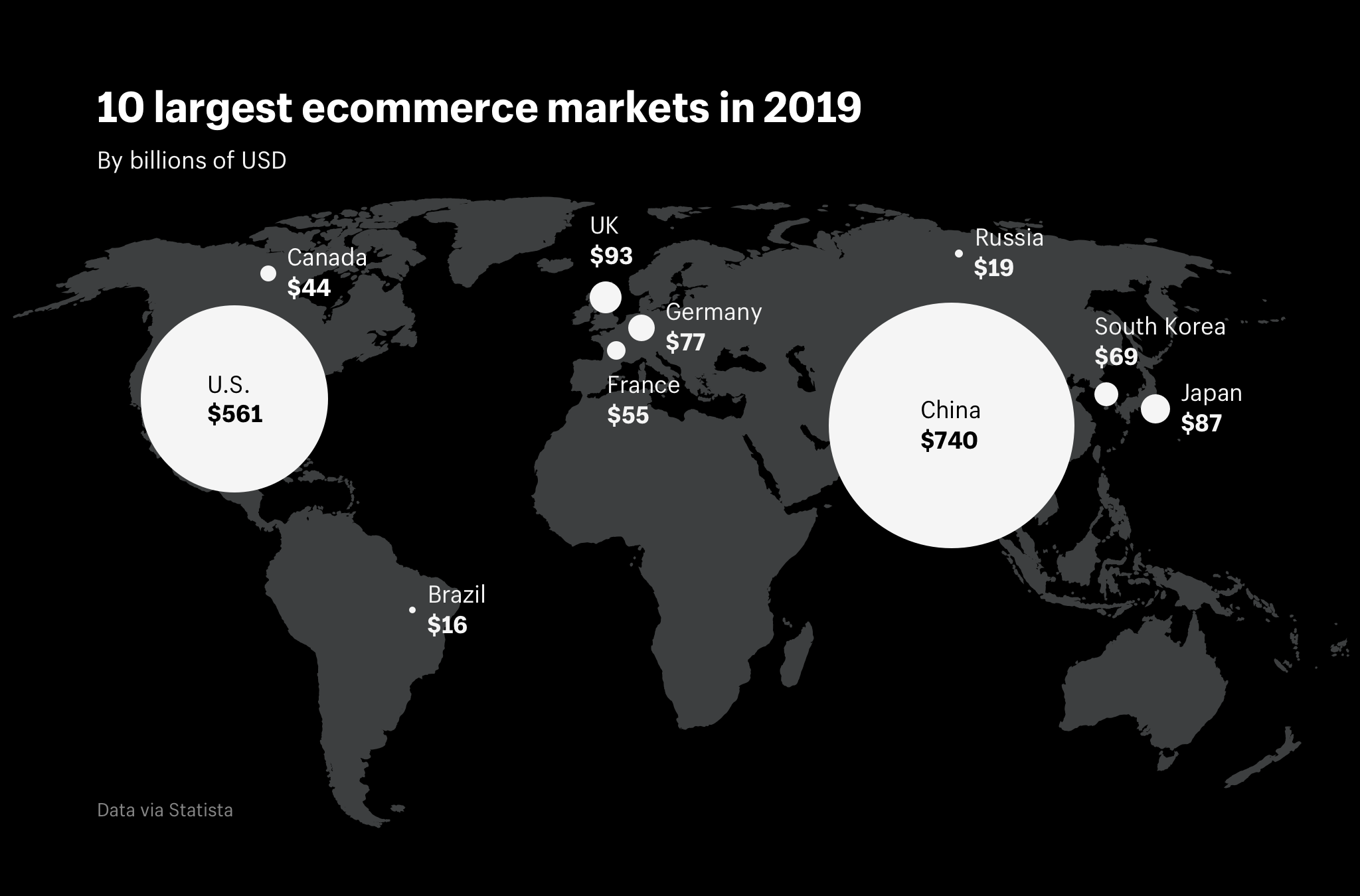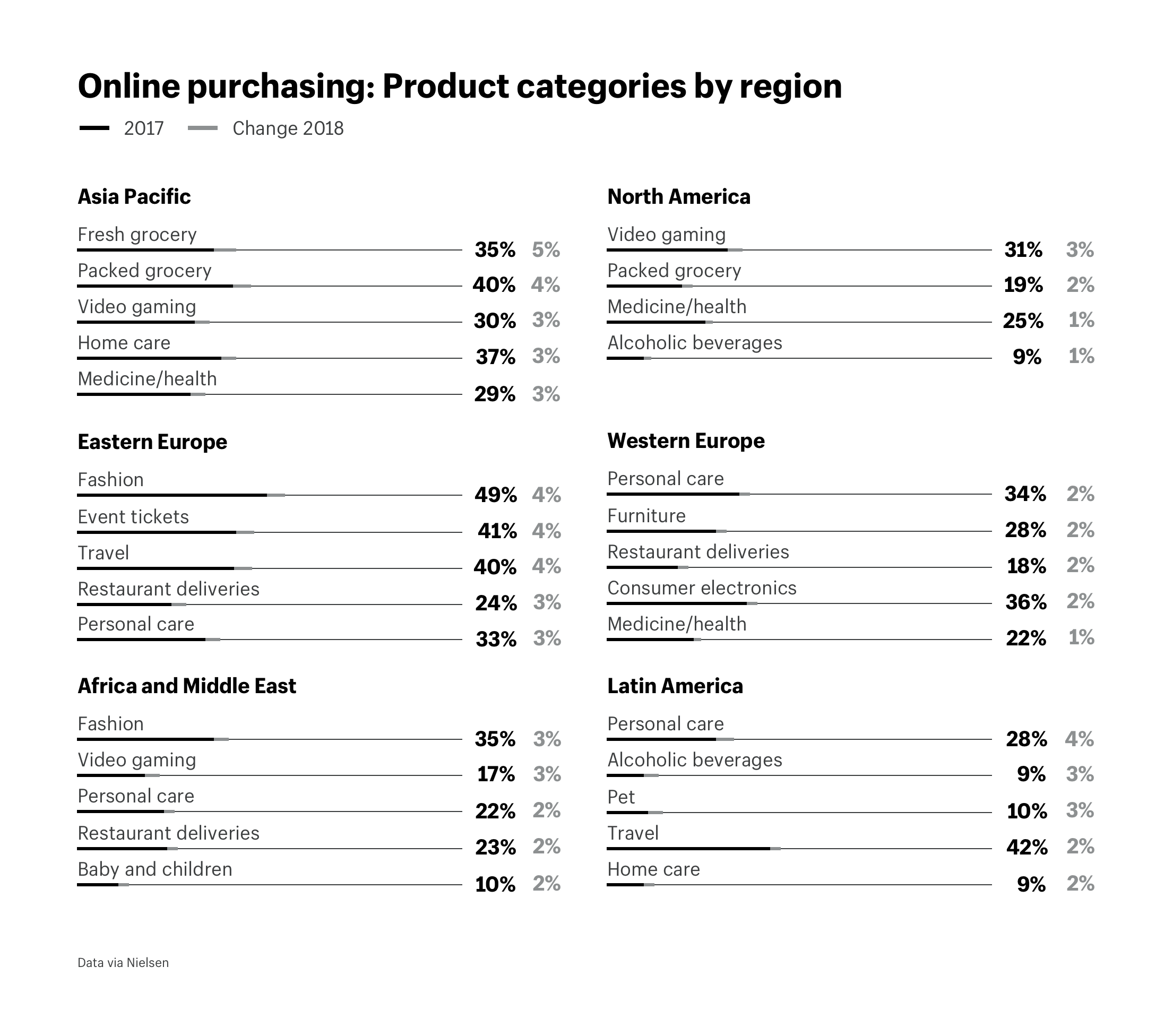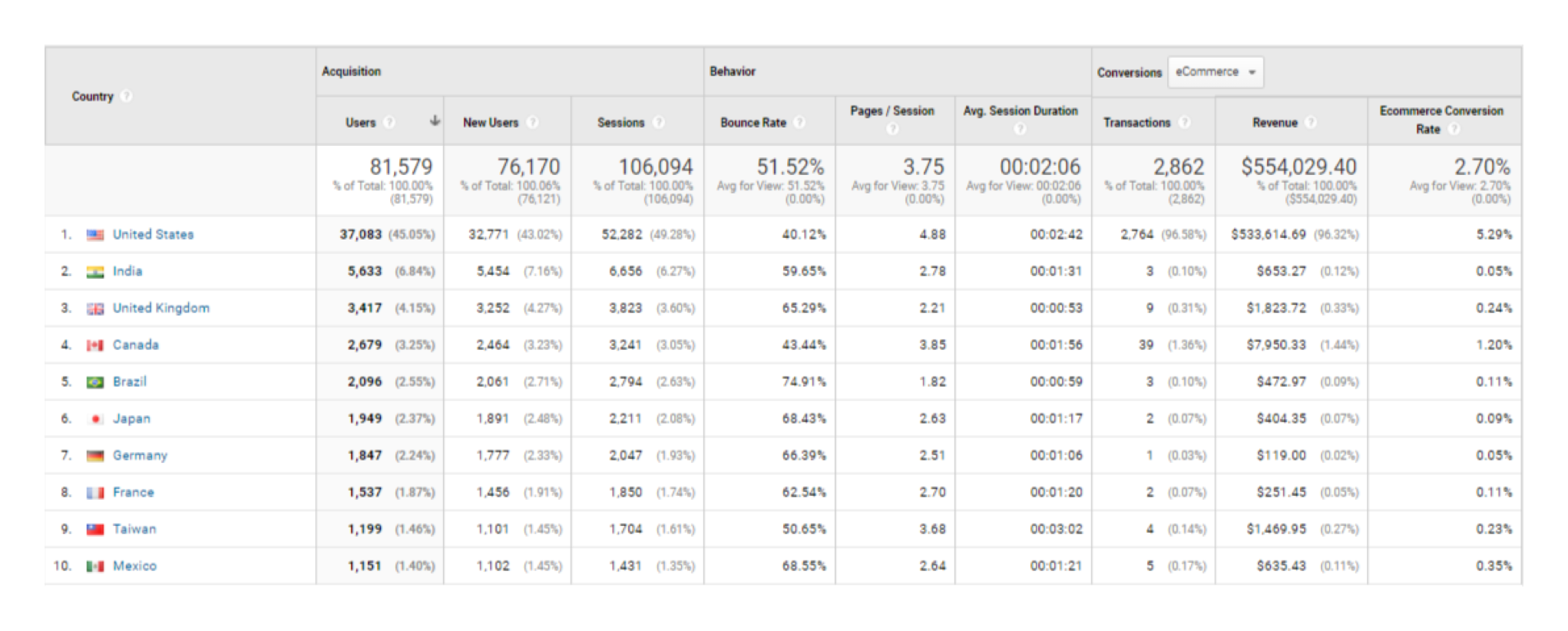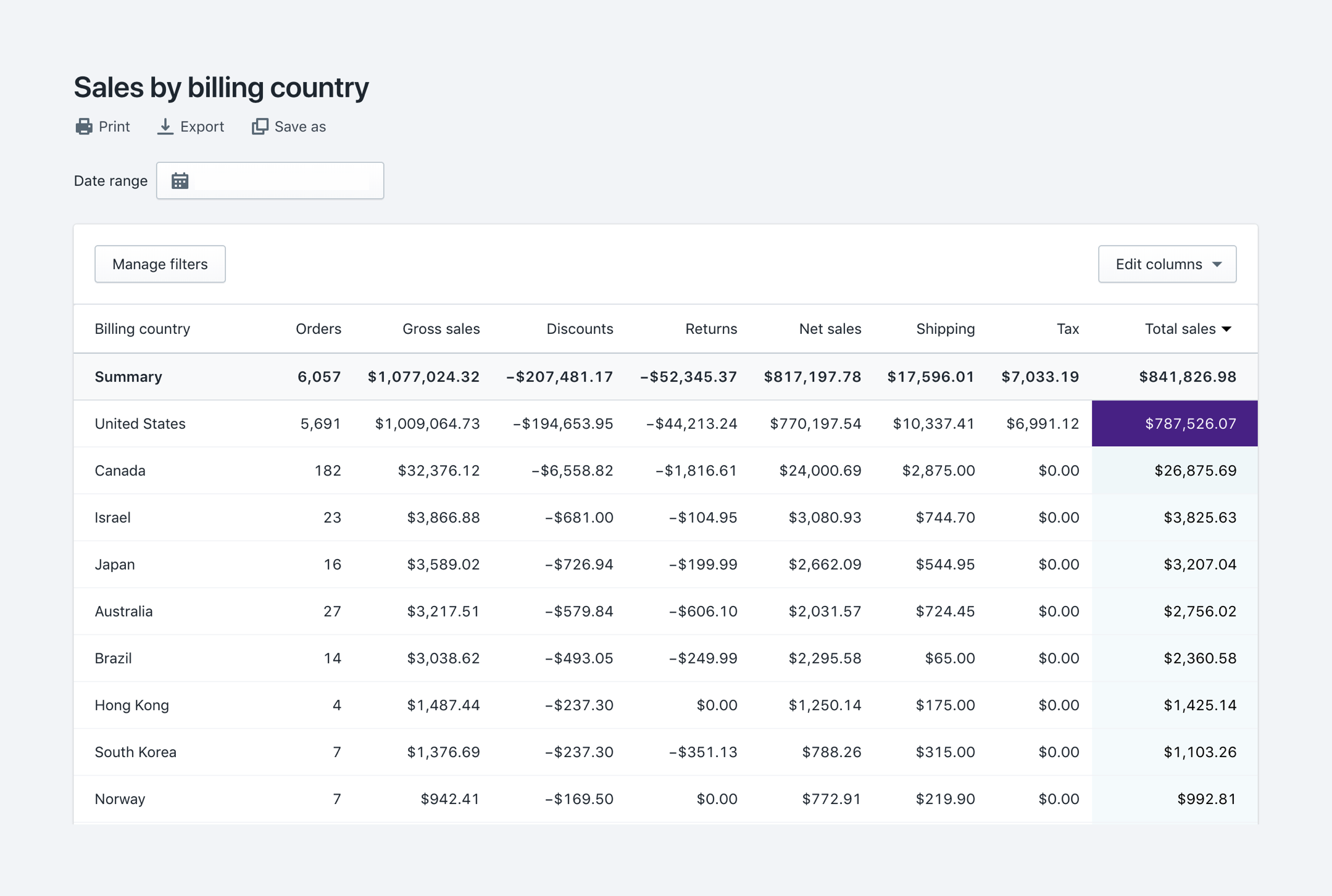Expanding Internationally: When Is the Right Time to Launch Your Shopify Store in a New Country?
Posted on
Welcome to article two of our international expansion series.
In this article, we'll provide you with the tools to determine when your business should expand internationally, and which markets are best for your business.
The stages are specific for a reason. Anyone can sell to a global market, but actually receiving those orders is another story. The fact that there are so few barriers to entry can make it seem simple. And this can often be the downfall of many online stores.
At the end of this article, you’ll be well on the way to crafting a tailored strategy for your business expansion. We don’t say this too often, but we really emphasise the importance in this process to carry out each stage, rather than picking and choosing.
Are you ready to expand into a new market?
We’ll be diving into this in more detail in the next article. For now though, here are a few questions that you should consider before committing to this growth phase.
- Can you afford to expand internationally?
- What costs would be involved? Keep in mind that costs are unique for every ecommerce business.
- Which countries to target? Going “global” is a sweeping statement. You can get there, but first, think of a phase one plan. This can be a single territory, or a region, which have similar cultures.
- What type of marketing will you initiate to target that country?
Assessing the opportunities
The next step is to assess the opportunities available for your products in other regions. You’ll need to know if other territories can be enticed by your product. Perhaps, there are no direct competitors in this new market; and you may be lucky that there are no societal reasons for this.
If you’ve ever seen the nosedive that Starbucks took when trying to enter the Australian market, you’ll know that not every business is going to be able to adapt to a foreign market.
Expect to invest in consumer education if the market is unaware of your product. If you’ve done the market research, and committed to a robust initiation plan you’ll be the product pioneer. Having the badge of honour isn’t just symbolic. Your newly acquired market will associate your brand with the product.

Which countries should I launch my expansion?
Take the time to do the research. Market research is invaluable here, and none of it is wasted. Research on countries that don’t make phase one of the expansion process can be stored for the future. And it’s not just Nielsen and official marketing reports. Put out feelers on your social media. Check to see the market’s saturation. Can you stand out in this new domain?
And if there’s no market at all, make sure there’s not a good reason for that. Even Google has failed when pushing their boat out when they met with censorship issues in China. However, if they’d let that one territory stop them from expanding, they’d never be the powerhouse that they are today.
PayPal’s 2018 report shows the top reasons that led customers to international online stores for their purchases:
- Better prices (72%)
- Access to items not available in my country (49%)
- I can discover new and interesting products (34%)
- Higher quality product (29%)
- Shipping is more affordable (24%)
If you can deliver an alternative like those commonly listed in a territory, then it’s worth researching further. Knowing your target market’s incentives for cross-border shopping is the axis upon which your business growth strategy tilts.
Once you find these prevalent desires, you’re already becoming wiser of your new market’s mindset and values.

Effective international expansion prep work
“Conducting an analysis” is often a vague phrase, and it can be hard to figure out what people actually mean when they advise that you do this. We’ll be helping you to answer the critical question.
Is there a market where my goods will be saleable?
When we talk about analysing the market for international opportunities, we have an exact process to get the information you need to have a razor-sharp insight into the territory that you’re thinking of tackling next.
Step 1: Look at your current data
This is the most important stage, which is to use the valuable data that you already have to hand for international expansion. This is built-in to your Shopify analytics, and we also advise using Google Analytics to make maximum use of this valuable resource.
Have you already got a customer base in a country outside of your local territory? If so, this is likely the best market for you to start your international expansion.
A lot of businesses skip this step and go straight for external marketing research. But there’s no better data about your companies position in the marketplace than the information you can gather from your store’s day to day operations.
Sales reports
These reveal your customers by billing country. If you are a Shopify Plus merchant, you can even drill down into each country to see which province or state performs best to target ads.
Inquiries
Gather all of your queries and comments from email and social media that ask about international delivery methods. Although it may take some time, it’s an easy task offering indispensable information.
Abandoned cart reports
Pull out your abandoned cart reports. I know, these can be painful to look at, especially as the rate of shopping carts left sitting idle increases every year.
This time though, focus not on the figures but the location of these potential customers. If you don’t specifically target a country, there’s likely to be more hiccups in channelling this new market through the sales funnel. By looking at the very last step of the stage funnel, the abandoned cart, you’ve got hints to the origin of your leads.
Step 2: Segment markets the right way
Segmentation doesn’t just stop at the country that’s sparking your interest.
Tunnel down.... Way down.
Once you enter into this new market you’ll be dealing with individuals; not a population. And demographics, provinces/ states, gender, income and occupation will apply, just like in your home market.
With each international market, it’s a good idea to segment your potential market by lifestyle, age group, income, gender, occupation and social media usage.
The difference is that this time, each segment will have different values to what you’re used to and will need marketing efforts that speak to their preferences.
Step 3: Find “cracks” in this new market
Search around the internet and find cracks in the market.
A simple hack here is to use the Google domain of the country that you’re researching for an authentic feel of what’s trending.
You’re unlikely to find gaps, as this indicates a meteor-sized, free-for-all space in the country’s commercial field left blindly open for anyone to exploit.
No, what you’re looking for is a single product in your range that doesn’t have a direct competitor. And that’s where you start!
Your marketing campaign then needs to revolve around this single product. This becomes your hook, we’ll worry about the later stages of conversion in this article series.
Step 4: Decide whether you can you satisfy consumers’ needs while maintaining profits
To answer this question, you’ll need to conduct a SWOT analysis.
|
STRENGTHS
|
WEAKNESSES
|
|
OPPORTUNITIES
|
THREATS
|
I know, it’s not the most glamorous tool, it has no AI-powered capabilities or nifty dashboard. But as basic as it may be, the ideas that often stem from them are not.
It’s such a simple tool to pinpoint the factors that will affect your business. And spend time fleshing out the answers, think about each angle.
For instance, in the threats section, look for indirect competition, economic stability, adverse demographic changes and always loop back to how surmountable these conditions are to your store should you enter the market. To protect what your store has already worked so hard to build, while still growing and moving into new ventures.
Step 5: Review expansion potential
This is the first time we’re going to dive into figures. You’ll need to scope out the market size and start planning a timeline to get an insight on returns for your expansion investment.
It’s easiest to set a goal and work backward. Pick a sales target and break this down into milestones. Hold onto this as we’ll be fleshing this out throughout the series.

Complete a data analysis using Google Analytics to determine when to launch into a new market
Entering a global market is definitely best done in stages. There’s so much to think about and manage. From the initial marketing plans, site content adjustment, customs duty and tariffs; it’s best to plan, prep and finally implement.
Otherwise, that marketing work and investment in new countries will hit a lot of snags. You need to have the groundwork down.
So we’ve done a lot of the internal work, and now it’s time for Google Analytics. This is a go-to tool for in-depth site analysis. If you haven’t yet set up Google Analytics, here’s a comprehensive article for beginners that shows you how to sync your site to the tool by using a tracking code. And you’re going to want to break down two key metrics;
- traffic: session count, new sessions, new site visitors and;
- engagement metrics: bounce rate, pages per visit, average session duration
High volumes of traffic that aren’t converting from a particular territory already signals a promising market.
The initial interest indicates that there’s an interest in what you have to offer, but there are likely cultural and/or linguistic snags that probably need altering. Keeping track of these metrics isn’t just important in the research phase.
Continuing to run your store in line with these metrics builds a sustainable customer experience.
The location overview is what you need to solidify your first market expansion project. Refine by product pages to narrow down which products are piquing people’s interest. If you’re in luck, you’ll find a couple of products and a couple of territories that match up.
So now you have conducted a nice chunk of useful market research collected, you can start looking at the current landscape of your industry in the countries that you’ve selected.
Use Google Market Finder to find your largest international markets
Think of a business dilemma and you can be sure that Google has created a software to help find the solution. Google’s Market Finder recommends the best markets for your business.

All you need to do is input your store’s URL. The Market Finder automatically pulls categories from your site, but you can also add more. It then gathers results based on markets that show the most interest in these themes. It also includes the information that you need to make informed decisions, like their “ease of doing business index” which measures the ease with which a company can enter a certain geographic market.
Although this isn’t everything you need to know, it’s a fantastic resource that draws from Google’s endless abundance of data.
Here’s a list of the industries that experience the highest rate of international consumers:
- Consumer electronics (53%)
- Toys and hobbies (53%)
- Jewellery and watches (51%)
- Cosmetics and beauty products (46%)
So if you’ve doubted that consumers won’t want to buy from foreign markets, let this put your mind at ease.
Your new market: landscape breakdown
What exactly does this mean?
No, we’re not talking about the rivers and mountains, but instead, we’re looking at everything that will have an impact on your expansion into this new country.
Businesses that delve into foreign markets with only a glance at what’s already available for customers are unlikely to yield any fruits.
Instead, look at the competitors. If all you’re seeing is highly concentrated markets, it may not be the right time for you to begin your expansion. These markets where there are a lot of parties vying for the same customers’ interest without significant stand-out features. It’s a high stakes game, and to become discoverable you’ll need substantial investment that may not yield the return that you were hoping.
So, it’s good to be realistic. Even in the alternative path that we are going to provide in a sec, you need to work hard. And you need to be prepared for the hard graft, for consistent social media targeting, site alterations are just the surface.
But it can be done. And if you’ve got the drive and the exuberance to tackle this next stage of growth in your online store, we have the expertise to get you there.
Diversified Markets
What you need to be looking for, and this is what a lot of online stores miss, is a diversified market.
And this essentially means that you need to be looking for geographic locations where your product is unknown, or at least, you know that you’re miles ahead of the competitors in that region. You also need to make sure that you can price your goods that aligns to your country’s wages. You may have a high-end product, but even the top echelons of society in your proposed country may not be comfortable with the price tag.
This tactic demands the least amount of resources and effort to set up your base. And the reason it’s not commonly executed, particularly by eCommerce stores, is because it’s not “the done thing”.
Saturated Markets
It’s understandable that eCommerce merchants want evidence of success in entering a new market. So they follow a competitor’s footprints and mimic their market expansion. The problem in this is in its predictability. You can bet that there are other competitors also following the trailblazers.
Although it may seem bold to exploit markets in countries that are uninformed or even unaware of your industry and its products, with enough research, it’s the choice that will require the least input for a favourable return.
77% of customers are influenced by brands. And unless you enter a market that’s not already capitalised, you’ll find it an uphill struggle to ever be a well-known brand, never mind an associated brand.
Another benefit to this technique is that dividing and conquering territories and starting with those that are easiest helps you to build momentum. If the time ever comes that you wish to tackle a territory with a higher concentration of competition, you’ve already got evidence that your product is a winner. You’ll have more reviews, ratings, comments, feedback than you do right now. So never say never.
Entering your online store into unknown territories can feel like going down a rabbit hole.
There are critical points where you must make a decision; choose which tunnel to go down. And these have massive consequences, for good or bad, for your business.
In the next article of this series, we’re delving into strategies particularly for SEO and domain.
Contact us
Elkfox have extensive experience with international expansion. Get in touch with us here for assistance.

